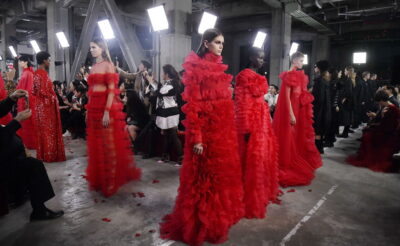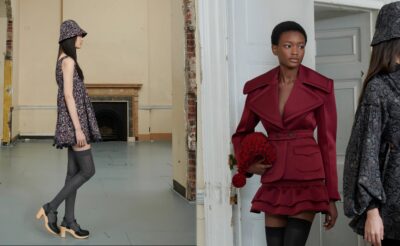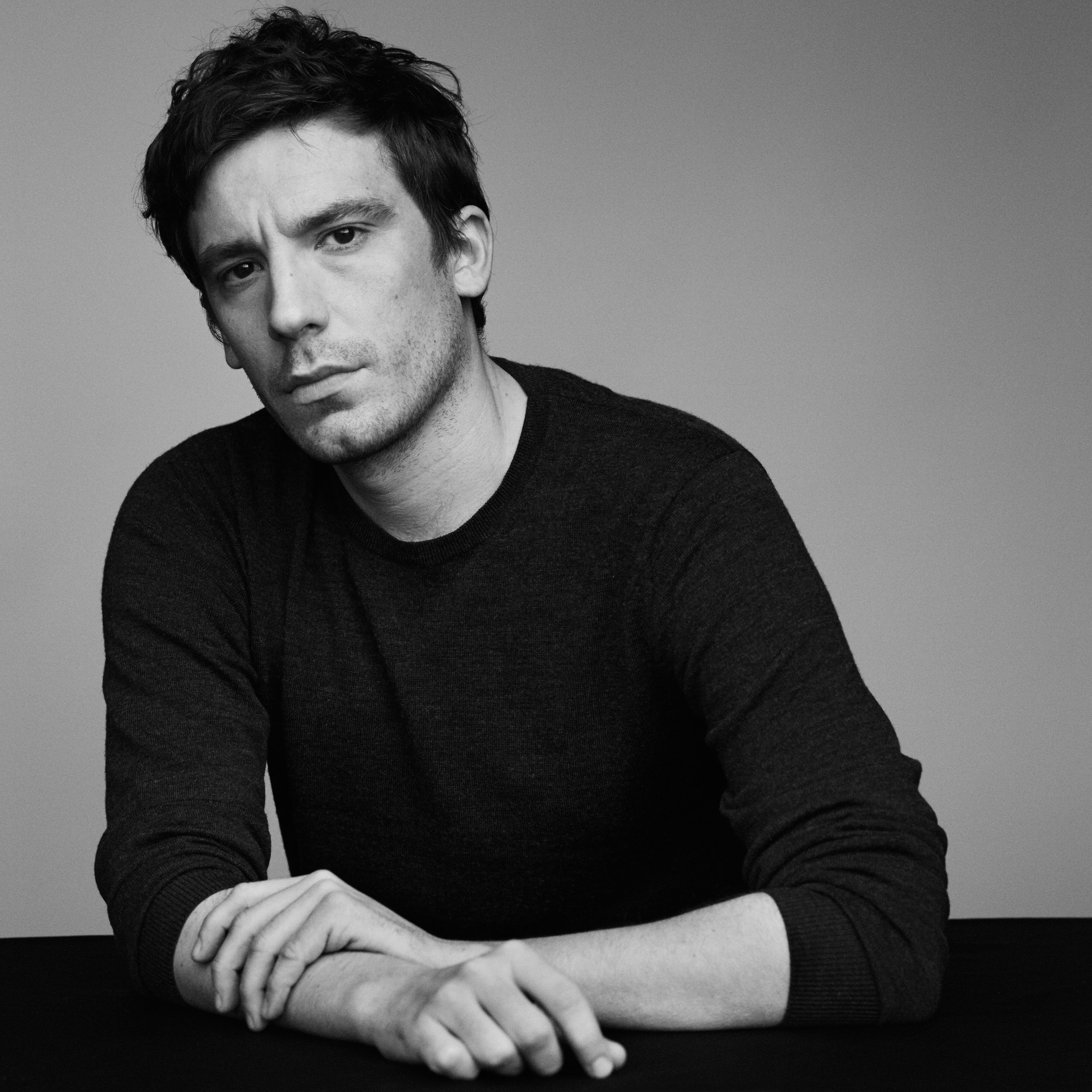
The House of Paco Rabanne is something of a Parisian institution. Founded in the Sixties by the Spanish designer bearing the same name, the brand skyrocketed to the height of pop culture thanks to Rabanne’s futuristic, innovative and avant-garde designs which incorporated everything from plastic and PVC to chain mail, revolutionising the way people thought about fashion. After his departure from the brand in 1999, a series of artistic directors came and went without making much of an impact on the floundering house. Cue Julien Dossena, fresh from a five-year stint at Balenciaga working closely under the tutelage of Nicholas Ghesquire, the young French designer who was 31 at the time, was appointed artistic director after a mere eight months working with the house’s design team and has set about making a significant impact on the brand ever since.
“You know,” Julien tells me over the phone in a thick French accent. “It’s been an amazing opportunity for me when I look back – the first year in particular and then what we’ve built since. It’s an amazing brand to work on. We had to reset the identity of the house first, which gave us the freedom to take things step by step which was really important to put the brand back on the map properly.” Dossena has done a remarkable job of turning things around at Rabanne, with his modern, futuristic and seductive designs striking all the right notes with both It Girls and a more matured set of style-savvy clients. Unlike most young designers that are handed the keys to a heritage house, Dossena didn’t delve straight into the archives in an attempt to replicate and pay homage to the brand’s DNA – instead, he chose to reevaluate its codes and redefine what they mean today.
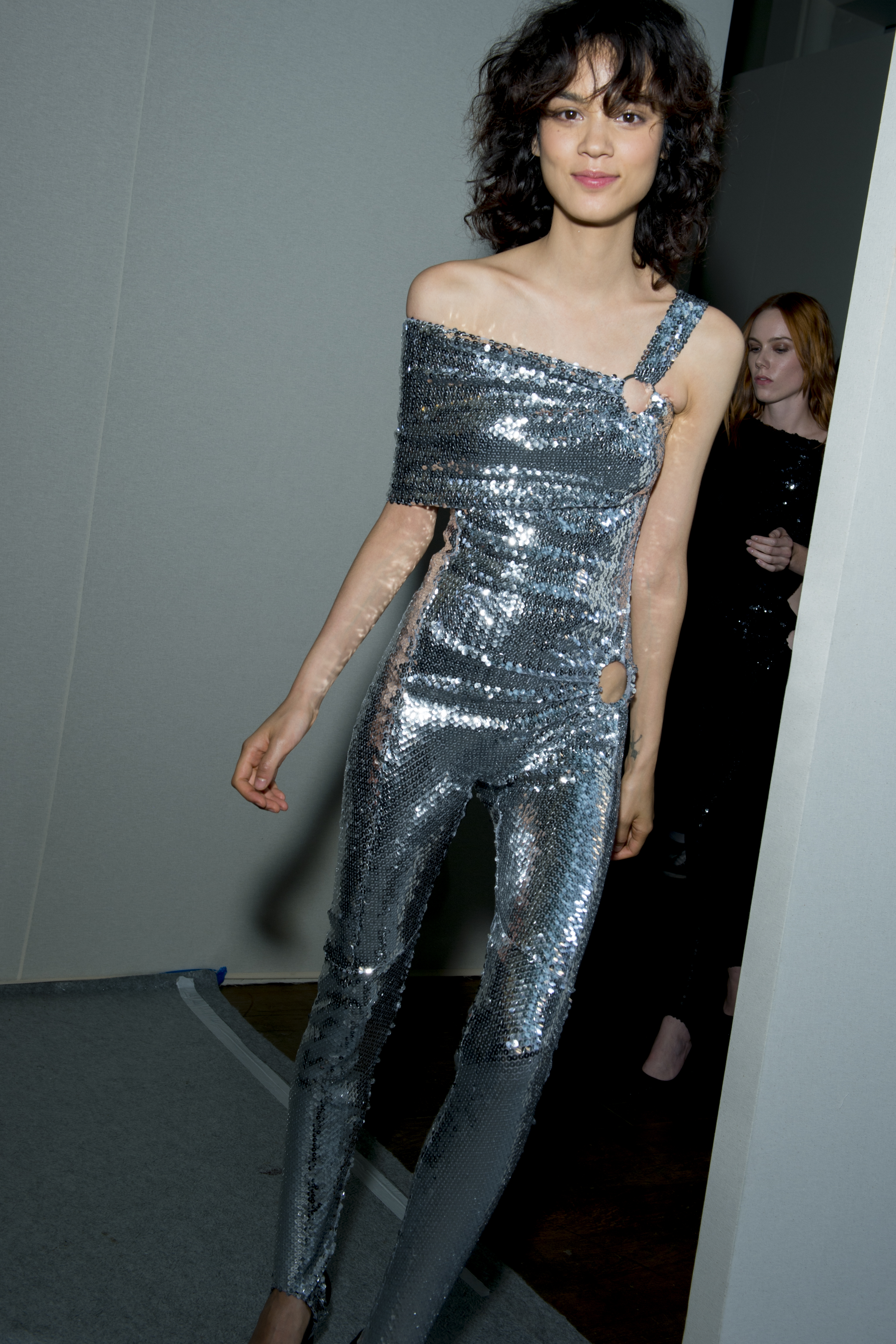
“The move to Rabanne has been a natural fit. I’ve always been really driven by the French brands from the Sixties, particularly the super modernist ones. My designs are sharp and architectural so it wasn’t difficult, to merge that with the brand’s codes,” he reflects. “The difficult part was actually expressing to our audience what today’s Paco Rabanne could be. People had this expectation of what the brand was – silver, super embroidered party dresses. I had to hold the reigns super tight over the first few years in order to set up that new and now identity. It was important for me to propose what the modern day Paco Rabanne codes could be and to not be afraid of going away from the original DNA at first to come back to it later – we needed that to grow and to become a contemporary brand.” This bold and meticulous move has paid dividends for both Dossena and Rabanne, garnering plenty of renewed interest in the brand and his designs. “I approached it as if it was a new brand on the market because everything needed updating,” he continues. “Looking at it this way made it easier because there was no weight of expectations which gave us the freedom to move forward and not be constrained or told that we needed to stay on the iconic side or that people had to understand where the brand came from. The new generation of customers that we have now, they don’t link it specifically to what Paco Rabanne was in the Sixties. There’s a desire for effortless clothes by this new generation which is quite refreshing. They don’t care if it looks like the old Paco Rabanne but at the same time we needed the values to be connected with the brand.” A man of his word, Dossena has indeed eventually come back to revisit Rabanne’s original DNA. His autumn/winter17 collection harked back to the spectacular space age aesthetic which first made the house so popular in the Sixties. Slanted with a modern, sports-luxe spin, Dossena crafted a series of shimmering chain mail gowns and separates in asymmetric cuts that caressed the body in all the right places yet still had plenty of fluidity and movement. It was this show that really announced to the fashion world that the house of Rabanne was well and truly back and better than ever.

Like many designers choosing to use their craft as a platform to voice and convey political statements, Dossena too took a sartorial stand for spring/summer18, channelling his creative energy into an upbeat show of positivity. “Right now we need optimism and energy,” remarks Dossena. “Of course I’m aware of the global problems in society, but at the same time I make clothes, so after the bombings and attacks in Paris last year and the nightclub shooting in Orlando, I wanted the collection to symbolise clubbing and being out and dancing and partying. It’s to demonstrate strength and is a show of our resilience and spirit to those responsible for these attacks,” he says passionately. “I wanted to express that on the contrary, we’re going to go out and we’re going to dance and we’re going to express joy and revel in the feeling of being alive, which I think is stronger than expressing sadness. Of course we are all sad, but we have to go on. I felt a lot of mixed emotions working on the collection,” he laments. “Every season I try to explore aspects of the brand that are still relevant today and this season disco felt right. It was such a big part of the sexual revolution and was a social era that embodied freedom and that joyful feeling of partying, meeting new people with no questions about their social backgrounds and origins and breaking boundaries as well. It was important for us to rewrite the era and figure out what could work now and integrate it with this joyful party feeling in clothes and in everyday life. It felt super relevant to work on the collection in light of how the world is today.”
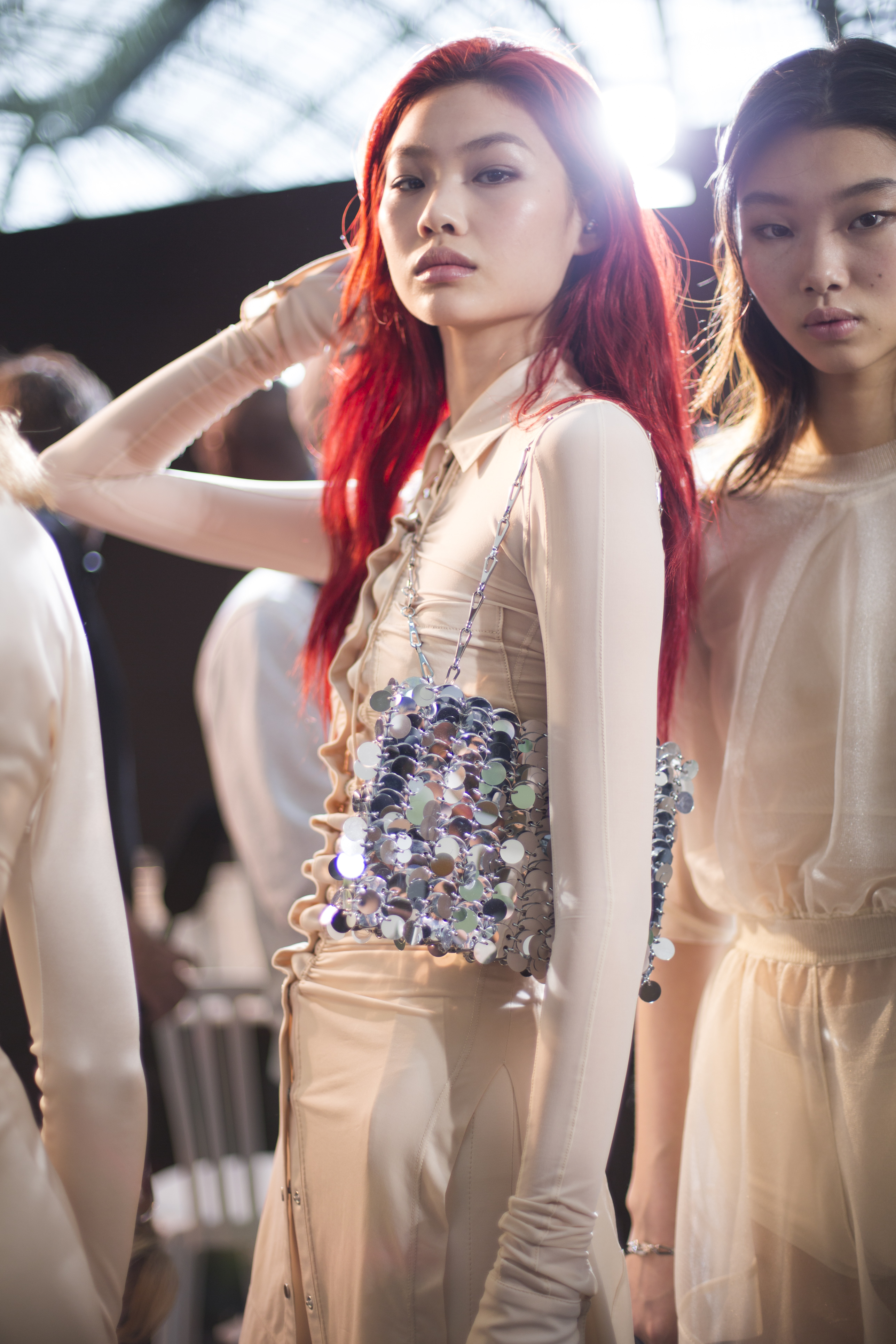
This defiant resolve for joy manifested itself into disco-worthy shimmering mini dresses, chainmail shorts and skin tight jumpsuits as well as ruched jersey dresses, tops and skirts fastened with press studs. “I’ve had really good reactions to the push-button jersey tops and skirts which drape along the body,” Dossena tells me. “They’re quite easy to wear but at the same time they’re super sexy because they hold the suggestion that they can be whipped off in one second,” he says with a laugh. This balance between clothes that are both sultry and practical is something Dossena manages to do really well. Aside from his disco offerings there were plenty of pieces – the separates in particular – that can be taken out of context and paired with a tailored suit jacket, structured shirt or cigarette trouser. It’s worth noting that Dossena styles all his garments with flat shoes, even the slinkiest of dresses come down his runway with boots or flats. “When we create a collection we try to consider the life of the modern woman as much as we can,” explains Dossena. “We’re making clothes for women that lead super, super busy lives and we want to take the hassle away from dressing as much as possible. We want to play with that joyful feeling of being a woman, but also provide practical choices – our woman is an active one – she has to be fast in life, she wears flat shoes and she can’t be stuck in something that will slow her down. She’s a woman with responsibility.” As we start to discuss what women want from their wardrobes today, Dossena is resolute. “Convenience and comfort,” he states, before adding, “And flattering too. As a designer you have to be humble enough to give the woman wearing your clothes the chance to express themselves uniquely – good design doesn’t define you, it integrates naturally and beautifully into your life.”
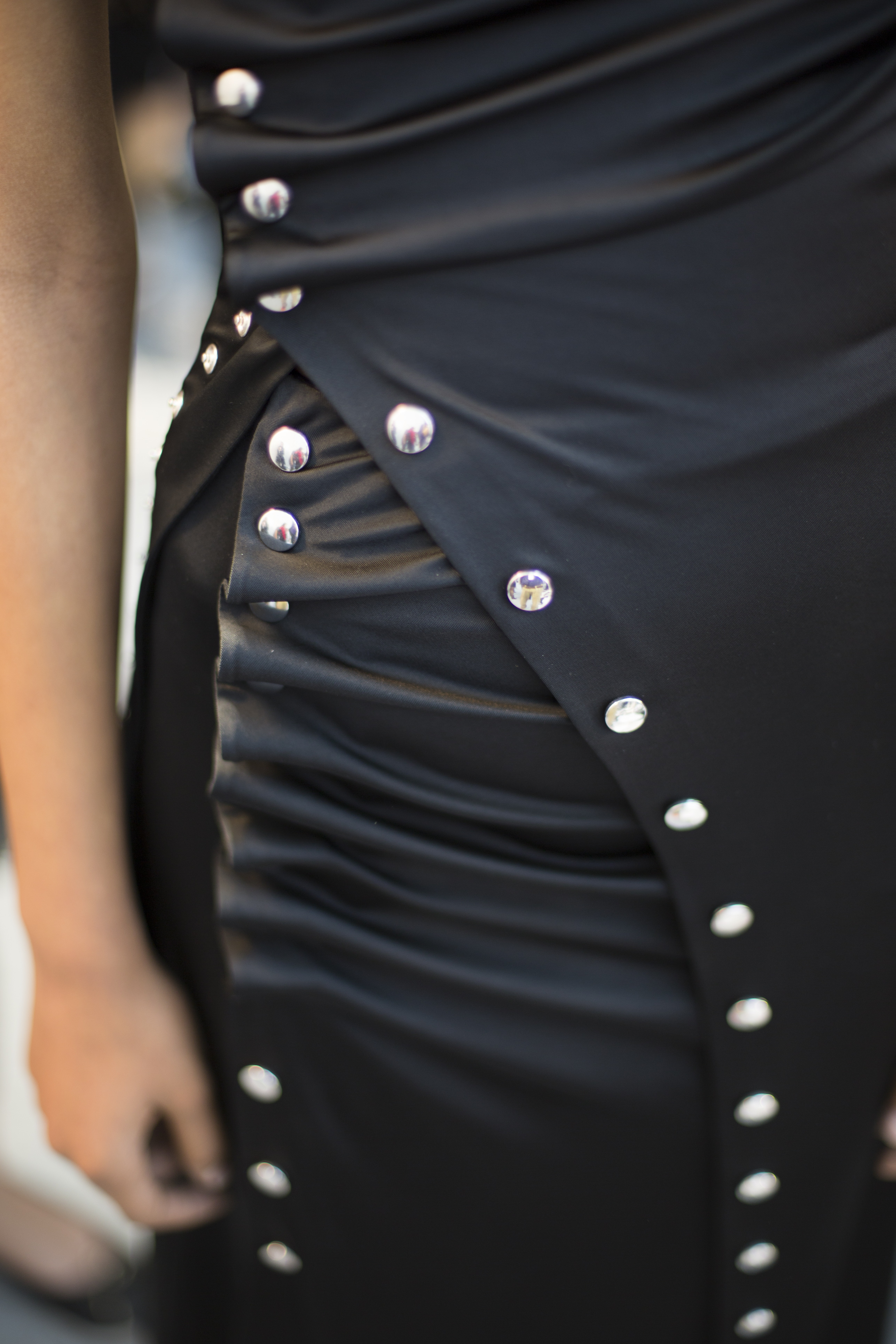
So where to from the discotheque? Dossena remains tight lipped about the direction of his next collection for the house, but does share his creative process citing films, art and photography books as well as editorial stories from old magazines as key sources of inspiration. “Generally it’s never one idea,” he explains. “ It’s an idea with many different elements that I can link back to movies and books and then I filter it, and make it relevant for the story we are telling to people this season. It’s a process – you draw for hours and hours till you capture that exact feeling or mood in the drawing, then after that you work on the girl, draping and then you get a sense of the attitude or the fit of a certain fabric on the body – it evokes another idea in itself. There’s a lot of connections, like a tree, lots of different branches.” Dossena also cites the different facets of the brand, particularly perfumery as inspiration points. “It’s always quite interesting to see the impact that the Paco Rabanne name has on the younger generation, they know the brand through the fragrances and not through the line of clothing so it’s come to be a big part of our identity today. Sometimes it’s fun to make links between the two worlds – the perfumes really allow me to work on that pop and street side of the brand which is really interesting.”

For such a young designer, Dossena has remarkable insight – it’s little wonder he has achieved so much so early on in his career. Yet he remains humble and grounded. When he speaks about the brand and his craft it’s easy to pick up on his sense of passion. “I come from a little town in Brittany so fashion was really not something I was based in. I came from a family with no ties to the fashion industry, but they always taught me to be a hard worker and I’ve always believed in the discipline and reward of hard work,” he says. “I never expected or knew that I’d have this position, but I was always firmly convinced that with hard work you can get anywhere – my parents always told me that.” Whichever era or genre his next collection draws from its bound to be exciting, contemporary and a sure-fire hit.

